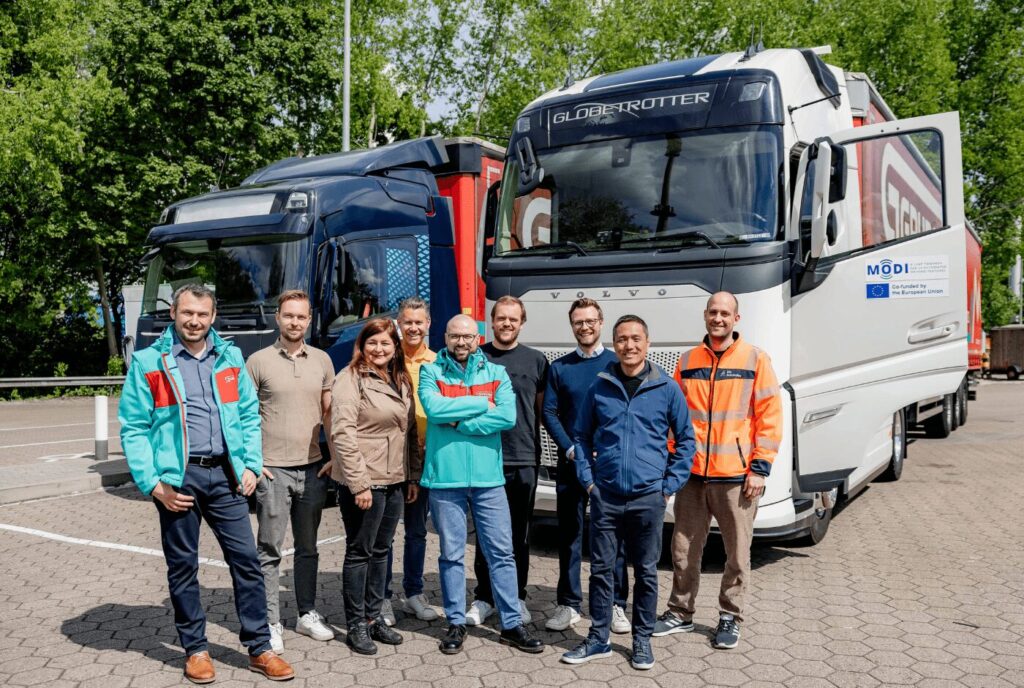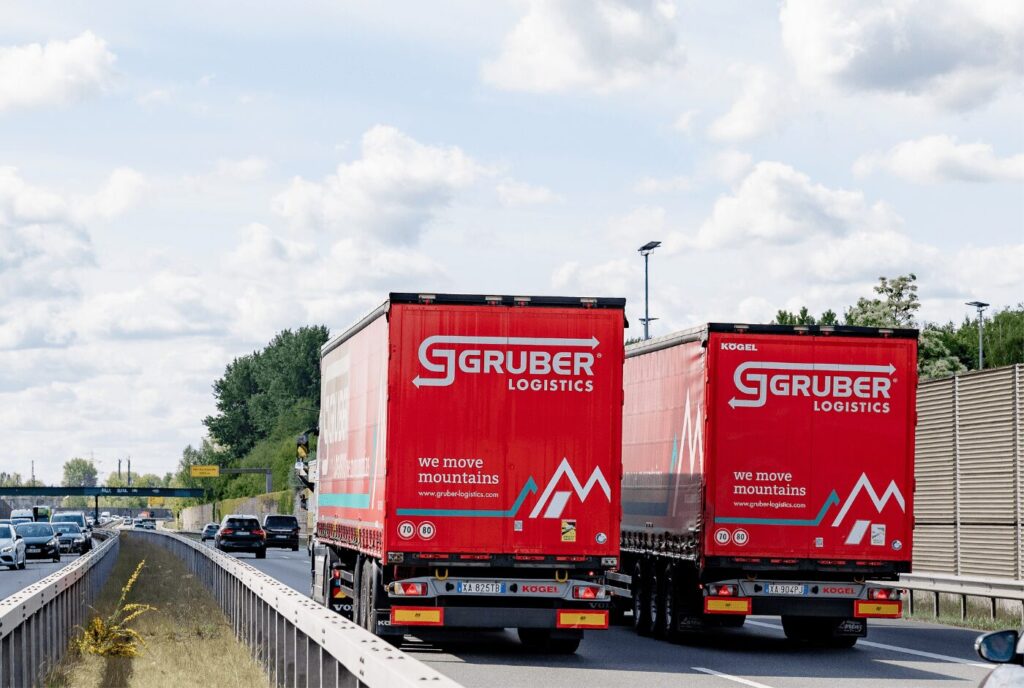This spring, two key practical tests for the automation of heavy-duty transport were successfully conducted in Hamburg’s urban and highway traffic as part of the EU-funded MODI project. In May, project partners Gruber Logistics, DAF Trucks, Volvo Trucks, New Mobility Solutions, and BAST (Federal Highway Research Institute), with the support of the Free and Hanseatic City of Hamburg, tested two crucial use cases: the safe, automated merging of trucks into highway traffic and the reliable detection of vulnerable road users in urban environments.
 MODI is a European innovation initiative bringing together 36 partners from industry and research. With a total budget of around 28 million euros, the project aims to demonstrate automated heavy-duty transport along a real traffic corridor through five European countries. In addition to technological aspects, the focus is also on the safe integration into existing infrastructures, environmental and safety issues, and legal frameworks.
MODI is a European innovation initiative bringing together 36 partners from industry and research. With a total budget of around 28 million euros, the project aims to demonstrate automated heavy-duty transport along a real traffic corridor through five European countries. In addition to technological aspects, the focus is also on the safe integration into existing infrastructures, environmental and safety issues, and legal frameworks.
“The increasingly critical driver shortage is forcing the industry to rethink. We need to deploy these professionals where their experience is strategically necessary – the technology already exists for simple, monotonous tasks. Automated driving functions and infrastructure technology not only enhance safety for our drivers but for all road users, including pedestrians,” explains Martin Gruber, CEO of Gruber Logistics, offering the logistics partner’s perspective.
 Thanks to close cooperation with Hamburg’s officials and traffic authorities, the tests could be conducted in real-world traffic – a prerequisite for the practical development of automated driving functions. In the test scenarios launched in early May, an automated lane change maneuver on a public highway was successfully demonstrated. Using Volvo’s “Cooperative Merging” function, the participating vehicles exchanged information in real time with each other and with intelligent IT interfaces at construction sites to safely navigate the test obstacles. This included merging into flowing traffic and navigating through construction zones.
Thanks to close cooperation with Hamburg’s officials and traffic authorities, the tests could be conducted in real-world traffic – a prerequisite for the practical development of automated driving functions. In the test scenarios launched in early May, an automated lane change maneuver on a public highway was successfully demonstrated. Using Volvo’s “Cooperative Merging” function, the participating vehicles exchanged information in real time with each other and with intelligent IT interfaces at construction sites to safely navigate the test obstacles. This included merging into flowing traffic and navigating through construction zones.
Additionally, integration into urban infrastructure – so-called “smart roads” – was tested. At a major Hamburg traffic junction, a novel detection system was deployed that identifies vulnerable road users such as pedestrians and cyclists from up to 300 meters away. Movement patterns were analyzed and transmitted in real time to approaching trucks, which have a more limited perception range. To realistically simulate critical blind spot situations, child crash test dummies were also used. This approach aims to provide an additional layer of safety.

In parallel, the project partners tested the use of cooperative traffic light data. With “time-to-green” information, trucks could adjust their speed in advance to pass through traffic lights without stopping. At the same time, the infrastructure dynamically responded to traffic volumes: traffic light phases were adjusted to flexibly match the expected arrival times of vehicles. “This mutual communication between vehicle and infrastructure significantly contributed to optimizing traffic flow, avoiding unnecessary braking, and thereby measurably reducing both fuel consumption and emissions,” explains Tobias Brzoskowski, New Mobility Solution Director.





